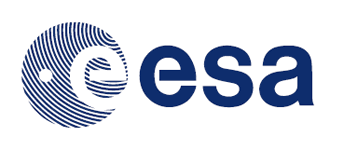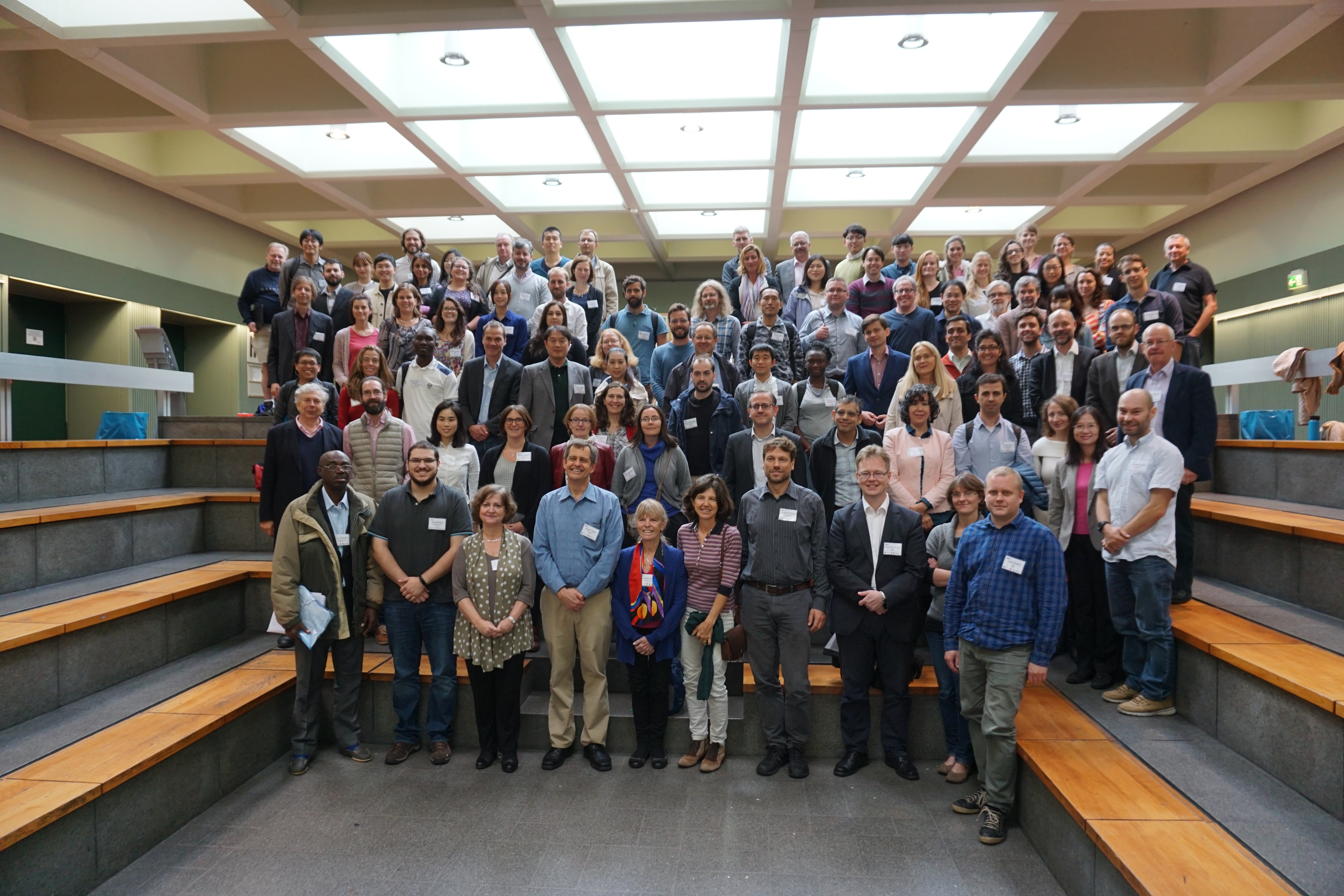2017 GEIA
Title
18th GEIA Conference - Emissions Science for a Healthy Environment: The interplay of human versus natural influences on climate and air quality
Date
13-15 September 2017
Location
University of Hamburg, Hamburg, Germany
IGAC Sponsored or Endorsed
IGAC Sponsored
Authors
Gregory Frost, National Oceanic and Atmospheric Administration (NOAA), USA
Paulette Middleton, Panorama Pathways, USA
Leonor Tarrason, Norwegian Institute for Air Research (NILU), Norway
Claire Granier, Laboratoire d'Aerologie, France; NOAA & University of Colorado Cooperative Institute for Research in Environmental Sciences (CIRES), USA
Host Institutions

Funding



NOTE: While iLEAPS is a sponsoring organization of GEIA, it did not provide funding for the meeting. So its logo is not included here.
Participating Nations (111 people from 34 nations)
Argentina, Austria, Belgium, Canada, Chile, China, Cuba, Czech Republic, Finland, France, Germany, Greece, Hong Kong, Italy, Ivory Coast, Japan, Kuwait, Mexico, The Netherlands, Nigeria, Norway, Poland, Portugal, Russia, Singapore, South Africa, South Korea, Spain, Sweden, Switzerland, Taiwan, Thailand, United Kingdom, United States
Background (Megan will write this section unless we want to say something specific here)

Conference Summary
The Global Emissions InitiAtive (GEIA), a vibrant IGAC-sponsored international scientific activity that began in 1990, has three goals:
1) promoting broad and consistent access to global and regional emissions data;
2) improving the scientific basis of emissions information by enhancing analysis of emissions processes; and
3) strengthening the global community of emissions stakeholders.
111 scientists representing 34 countries recently gathered at the University of Hamburg in Germany for the 18th GEIA Conference on Emissions Science for a Healthy Environment: The interplay of human versus natural influences on climate and air quality. The 3-day Conference included 95 presentations organized around 3 themes: Inventories & Emissions Trends; Top-Down Emissions Analyses; and Environmental, Climate, Health & Societal Impacts. These themes were discussed and elaborated in oral sessions combining 5-minute talks on similar issues, along with poster sessions that expanded information on each theme. Each oral session was followed by a speaker panel guided by questions meant to stimulate discussions that were a highlight of the Conference. Emerging capabilities for displaying and analyzing emissions data (ECCAD) and for building global emissions inventories (CEDS) were also demonstrated at the Conference. A Town Hall discussion engaged Conference participants in a robust exchange of ideas about the priorities for future emissions research and how the GEIA community can address these issues in order to better inform its stakeholders. The Conference program and presentations are available at http://www.geiacenter.org.
The scientific presentations and the discussions throughout the Conference highlighted recent advancements and continuing challenges to improved emissions understanding:
Extended emissions data. There is a continuing need to gather and improve additional data that are fundamental to emissions inventory development and the representation of emissions in atmospheric models. Data on temporal variations of emissions and the heights of sources are necessary for modelling studies, yet are not always easily accessible. Geospatial data and their associated proxies used to assemble inventories and allocate emissions to model grids, such as land use/land cover and the extent of urbanization, need to be known with higher accuracy and to have their temporal changes quantified. The quality of such data is not always well documented, nor are they sufficiently validated. The community urged GEIA to promote transparency and documentation of emissions inventories and their auxiliary data and recommended top-down validation of inventories with models and observations. GEIA is planning to form a working group to gather and harmonize emissions auxiliary data for use by modeling groups around the world. Similarly, GEIA’s Volatile Organic Compound (VOC) Working Group is working to evaluate the speciation of VOC emissions using ambient observations in the world’s largest cities.
There continues to be a need to improve near-real-time estimates of emissions as well as longer term emissions scenarios. A potential future direction for the community is finding ways to link current robust static inventories with datasets that account for the dynamical nature of emissions, which constantly change in response to anthropogenic and natural drivers. This effort also involves improving the capabilities for near-real-time observations of emissions. There is a growing demand for higher resolution emissions datasets, both to enhance atmospheric science analyses and to facilitate collaborations with stakeholders, such as the human health community.
Top-down emissions analyses. In contrast to “bottom-up” methods employing a process-level understanding of emissions, “top-down” analyses combine ambient observations with atmospheric modeling to estimate emissions at local to global scales. Top-down methods, including a variety of inverse modelling approaches, have proliferated in recent years and were well represented at the Conference. Atmospheric inversions of greenhouse gases measured by networks of ground stations and tall towers are now part of European national reporting to international agencies. When made consistently over time, measurement networks like these can be used to constrain emissions from different sources.
Satellite measurements continue to evolve as important constraints on emissions, and can help to identify missing or inadequately quantified sources in bottom-up inventories. Evidence from top-down analyses using data from a variety of measurement platforms can indicate pollutants of emerging importance, lead to improved inventory development, and suggest areas where control actions may be needed. Multi-component emissions analysis, i.e., deriving emissions information for multiple pollutants simultaneously, is important to understand emissions sources and changes in emissions drivers. With this bounty of research findings comes an increasing need to synthesize information derived from top-down emissions and trends, both in areas with existing robust bottom-up inventories and in developing regions where inventories are relatively new and where previously unidentified pollutants and sources are emerging.
Evaluating uncertainties. The Conference highlighted efforts to increase transparency in emissions estimates through systematic uncertainty analysis. Uncertainties are still not reported for many bottom-up inventories. Uncertainty estimates are needed for inventory emissions’ temporal evolution and spatial distributions, and also for inventory auxiliary data such as land use. Top-down methods likewise require better documentation of their errors, not only for their final derived emissions values but also for the datasets that are used to produce a top-down estimate. For example, satellite retrievals rely on various assumptions about atmospheric vertical composition and the physical properties of the absorbing species. Inverse methods require error covariance estimates that need better documentation and assessment. Top-down methods that make use of atmospheric models employ a variety of chemistry and transport schemes that introduce unquantified or poorly understood errors into derived emissions estimates. Sensitivity analyses and multi-component evaluations may show promise for quantifying uncertainties in top-down estimates.
Engagement. Improved engagement through enhanced dialog and stronger linkages, both among emissions experts and between these experts and their user communities, is vital to understanding emissions and their applications around the world. The Conference demonstrated that emissions are dynamic, with new pollutants and sectors emerging all the time in different regions of the globe. The best emissions products result from strong connections between local and international experts, as exemplified by the efforts of GEIA’s China and Latin America/Caribbean Working Groups. The Conference highlighted strengthening links between data providers in the regulatory and industrial communities and between researchers and policy makers engaged in air quality, climate and human health. Data from the GEIA community is increasingly being used to understand environmental and health impacts in developing regions, while existing data was largely collected in more developed nations. GEIA could play a larger role in raising awareness of environmental and health impacts of emissions.
This 18th Conference demonstrated that GEIA has evolved from providing input to science to providing scienceto serve society and to support environmental policies. GEIA looks forward to seeing the progress made on these issues when the community reconvenes in Santiago, Chile, in November 2019.

18th GEIA Conference Participants

Hamburg, Germany